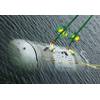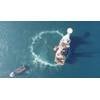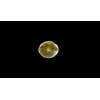EU Sees Blue Economy as Area for Sustainable Growth
Two thirds of our planet is covered by oceans and seas. If we manage them in a responsible manner, they can provide sources of food, medicine and energy while protecting ecosystems for generations to come. However, in order to make this possible, we need to know more about our seas and oceans. The Commission has therefore today presented an Action Plan for Innovation in the 'Blue Economy' to help use ocean resources sustainably and drive growth and jobs in Europe.
European Commissioner for Maritime Affairs and Fisheries, Maria Damanaki said, "Today, we put the building blocks in place so that tomorrow's generation of Europeans will have the knowledge and skills to better manage our oceans and draw the full benefits they can provide us, while respecting the balance of the ecosystem of the sea." She continued: "For example, our initiative to create a digital map of the entire seabed of European waters will increase the predictability for businesses to invest, lowering costs and stimulate further innovation for sustainable blue growth."
The Commission identifies a number of hurdles to be overcome: our knowledge about the sea is still limited, maritime research efforts between Member States are not linked up, whilst the European workforce of tomorrow will need more engineers and scientists to apply new technologies in the marine environment.
European Commissioner for Research and Innovation, Máire Geoghegan-Quinn said, "We probably know more about the surface of the Moon and even Mars than we do about the deep sea floor. Maritime innovation has enormous potential for our economy, and will help us meet challenges like climate change and food security. Blue Growth is therefore a focus area for Horizon 2020, our new research and innovation program."
The Commission action plan presented today proposes to:
- Deliver a digital map of the entire seabed of European waters by 2020.
- Create an online information platform, to be operational before the end of 2015, on marine research projects across the Horizon 2020 program as well as nationally funded marine research, and to share results from completed projects.
- Set up a Blue Economy Business and Science Forum, which will involve the private sector, scientists and NGOs to help shape the blue economy of the future and share ideas and results. A first meeting will take place in the margins of the 2015 Maritime Day event in Piraeus, Greece.
- Encourage research, business and education actors to map out the needs and skills for tomorrow's workforce in the maritime sector by 2016.
- Examine the possibility of major players from the research, business and education community to form a Knowledge and Innovation Community (or KIC) for the blue economy after 2020. KICs, part of the European Institute of Innovation and Technology (EIT) can stimulate innovation in multiple ways, for example by running training and education programs, reinforcing the path from research to the market and setting up innovation projects and business incubators.
The EU's maritime or "blue" economy is vast, with over 5 million employees in sectors as diverse as fisheries, transport, marine biotech and offshore renewables.
Between 2007 and 2013, the European Commission contributed an average of €350 million a year towards marine and maritime research through its seventh Framework Program. A substantial amount of marine research is also carried out through Member States' programs (around €300 million per year in France and Germany for example). Blue growth is a "focus area" in the new Horizon 2020 program, with a specific €145 million budget for 2014-2015 alone, and further opportunities across the program.
Around 30% of the seafloor surrounding Europe has not yet been surveyed. This varies from 5% of the Bay of Biscay and the Iberian Coast to more than 40% of the North Sea and the Ionian and central Mediterranean. A better understanding of what is happening below sea level will provide a better knowledge of ocean resources and a better understanding of how these can be used sustainably.
Skill gaps are already apparent in the wind energy sector. In 2012, this offshore sector represented 10% of the annual wind capacity installed, and employed 58,000 people directly and indirectly across Europe. It is projected that by 2020, the proportion of wind power offshore will reach 30% of the annual wind installed capacity. That means 191,000 jobs by 2020, growing to 318,000 by 2030. But the sector could also see a skill shortage growing from 7,000 now to 14,000 full-time equivalents if the future workforce is not equipped with skills in maintenance and manufacturing for example.
europa.eu















 February 2025
February 2025



